Aloe vera plants are as visually stunning as they are beneficial.
While these succulents are easy to care for, a drooping aloe plant isn’t uncommon. Despite them being low-maintenance, aloe plants are more prone to neglect than you would expect.
This article covers the nine reasons why your aloe plant is drooping and what to do about it.
Table of Contents
1. Too Much Moisture
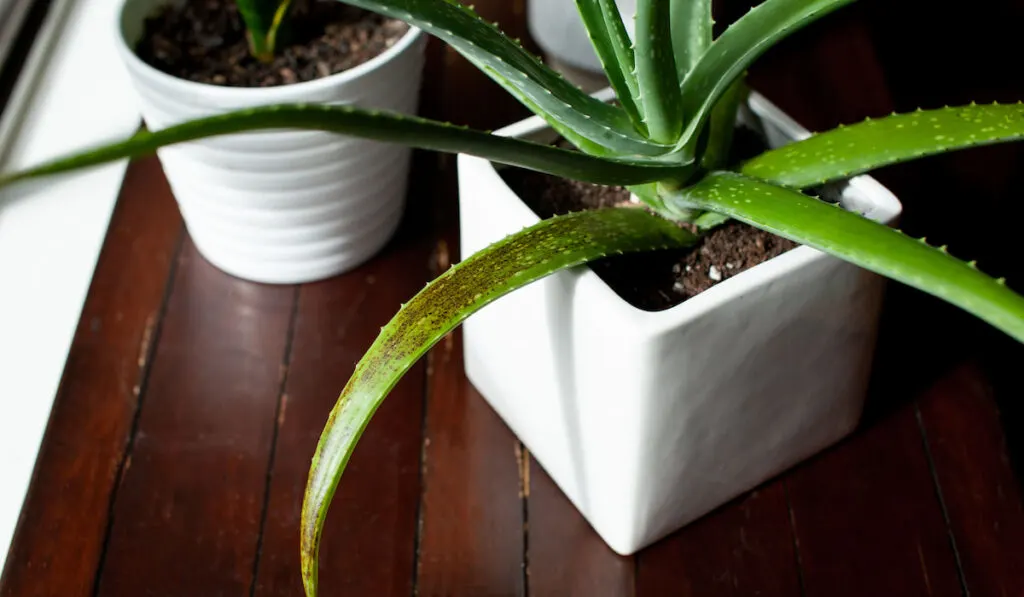
As a desert native, your aloe plant doesn’t need much water.
Overwatering is the number one reason why your aloe plant is drooping.
To avoid overwatering your aloe plant, check the soil for dampness. Only water when the soil is dry.
When in doubt, remember that certain variables should dictate your watering schedule. These include:
- Temperature
- Drafts
- Humidity
- Light level
- Soil type
- Pot size
- Plant size
2. Poor Drainage
Along with overwatering, poor drainage could be another reason why your aloe plant is drooping.
Succulents naturally grow in sandy soil that dries out as quickly as it is saturated. Knowing this, your best bet is to mimic this natural environment to give your aloe plant the best chance.
Use gritty compost for your aloes to ensure they acquire nutrients without retaining excess water. Grow them in planters that have drainage holes or drill the holes yourself.
3. It’s Too Dry

On the flip side, underwatering could be the culprit. Too little water can be equally hard on your aloe plant.
Aside from drooping, the leaves will also appear leathery and dull if your aloe isn’t getting enough water.
Promptly water your aloe plant when the soil is completely dry. Soak the soil and ensure that the excess drains out, and then wait for the soil to dry out completely once again.
You will notice the leaves filling back up in a day or two. But, depending on how dry the soil was, you may need a second watering cycle.
If your aloe plant is still drooping after this, ensure that the roots are not dead.
4. Inadequate Sunlight Exposure
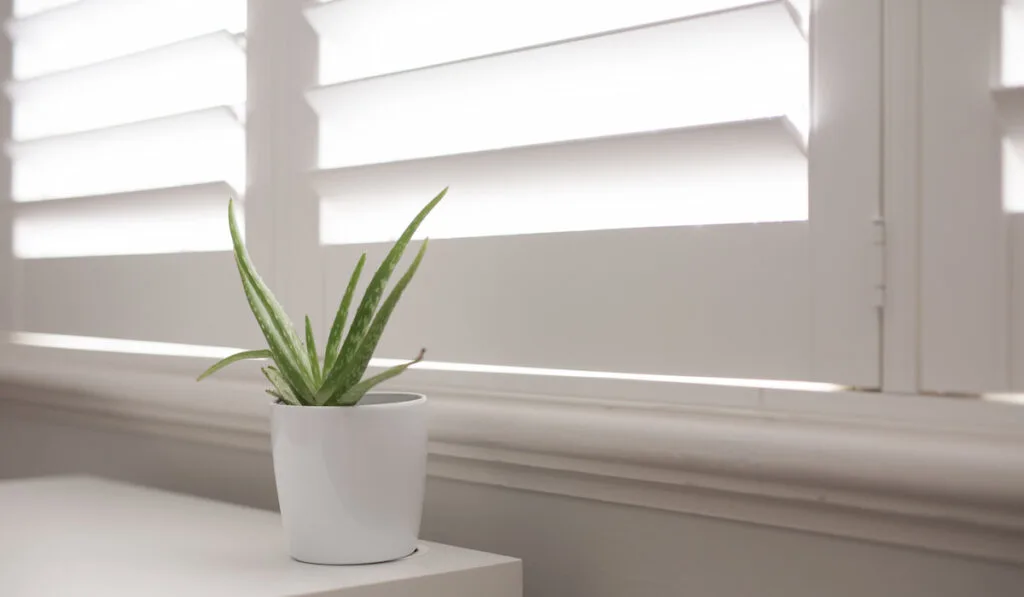
While it is considered a hardy plant, aloe vera barely thrives without bright and indirect sunlight.
Aloe vera requires at least six hours of sunlight per day and will instinctively etiolate toward the light when this threshold is not met.
To keep your aloe plant happy, consider placing it where it receives bright, indirect sunlight. Ensure that the sun does not directly shine on the plant to prevent sunburned leaves.
Similarly, be cautious about shocking the plant by moving it from dim to bright light all at once.
5. It’s Too Hot or Cold
I bet you did not expect that your aloe plant would droop because of extreme temperatures, seeing as that is what deserts are all about.
As an understory plant, aloe vera naturally grows in the shade of taller succulents.
The heat from direct sunlight can cause your aloe plant to lose water faster than it can replace it, making the stems droop.
Very low temperatures can also cause your aloe vera to droop. Consider keeping your plant in a draft-free spot, away from windows, especially during the winter months.
Another thing to keep in mind is temperature-change shock. The only thing aloe plants hate more than extreme heat or cold is sudden temperature change.
Avoid moving your aloe from a constantly warm environment to a cooler or draftier spot to prevent drooping.
6. Pests and Diseases
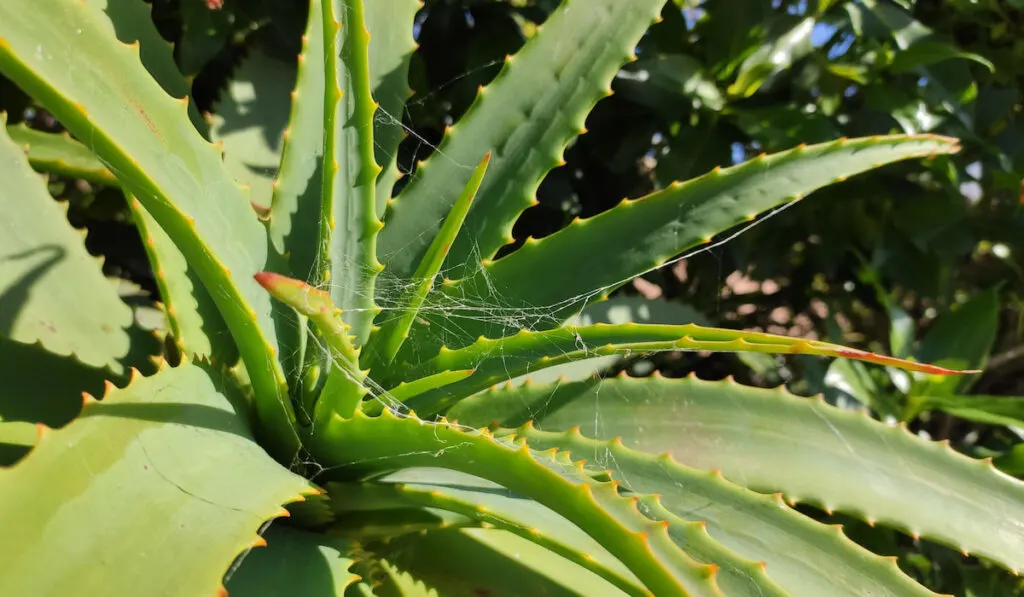
While aloe vera is relatively pest-free, it is not unusual to find pests like mealybugs, aphids, and scale insects hiding in the roots, soil, and leaves.
If you see webs, holes, or marks on the leaves, your aloe may have pests.
Diseases can also be the reason why your aloe plant is drooping.
Sadly, several bacterial and fungal diseases can affect your succulent.
Here are the most common diseases:
| Disease | Type/ Cause | Signs |
| Basal Stem Rot | Fungal infection due to too much moisture | Browning or rotting of the aloe base |
| Aloe Rust | Fungal infection caused by overly cool temperatures and too much moisture | Yellow spots that turn brown with time. Growth of orange spots on the outer parts of the leaves |
| Bacterial Soft Rot | Bacterial infection caused by overwatering | Watery and wilted leaves |
You can eliminate diseases by cutting off infected leaves and stems and applying the right fungicide.
7. Planter-Bound Roots
Your aloe plant could be drooping because its roots are pot-bound and can no longer grow to support the plant.
Check for this by tipping the plant out of the planter and analyzing the root system.
Tightly curled roots are your cue to re-pot your aloe.
When shopping for a new planter, consider the
- Drainage holes
- Size (depth)
- Material (heavier material offers sturdy support)
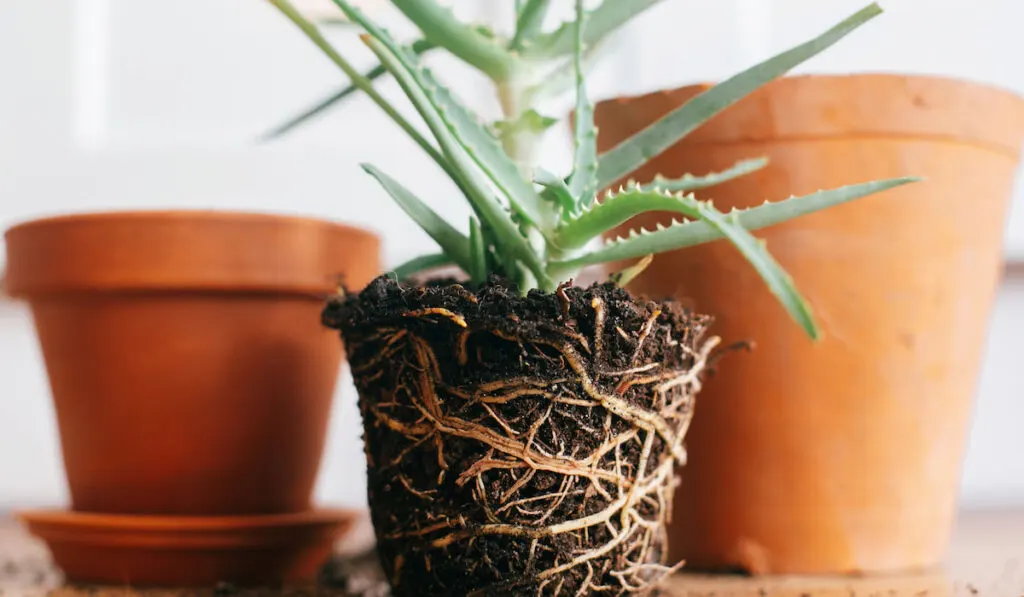
8. Transplant Stress
Repotting ensures that your aloe always has enough room for growth, but it can stress the plant. Aloe plants are tough, but transplanting will stress any plant.
After transplanting, your aloe might have had difficulty establishing roots in its new environment, hence the drooping.
To prevent this, handle the plant gently and ensure its new pot has suitable soil and is located in similar conditions.
9. Root Rot
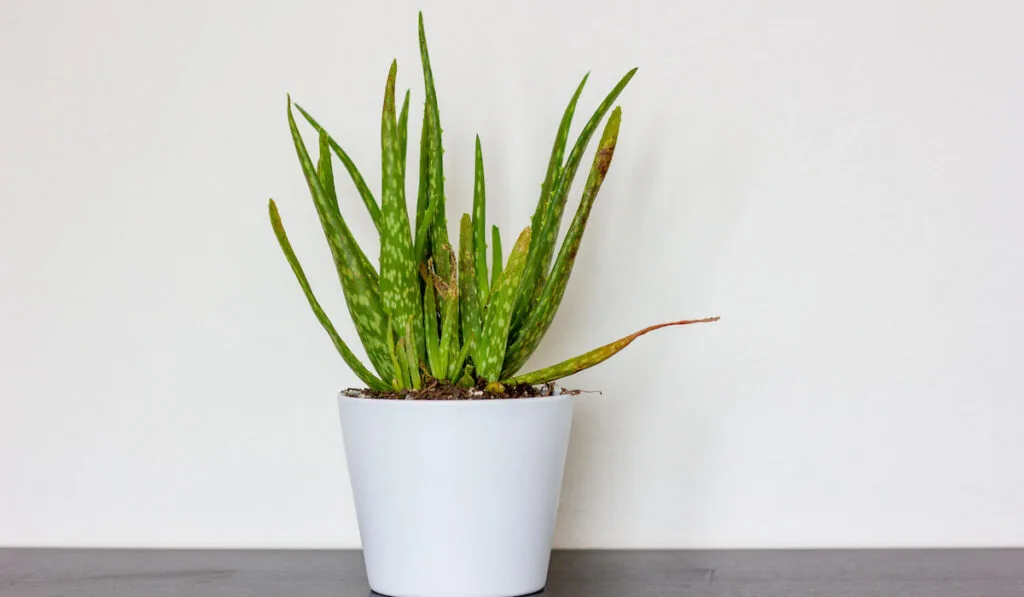
If you overwater your aloe plant, the roots may start to rot, and the leaves may brown and wilt.
Because the roots are constantly submerged, overwatering deprives them of much-needed air pockets. Without support, your aloe plant has no choice but to droop.
A combination of proper watering, the correct soil type, and a proper drainage system will eliminate any chance of root rot and plant death.
Final Thoughts
As you can see, there are numerous reasons why your aloe plant is drooping. Luckily, most of these reasons are easy to rectify, and you should be able to nurse your plant back to health. With attention to detail and swift action, you will be surprised at how tough your aloe plant is.
Resources:
- https://www.popsugar.com/home/why-is-my-aloe-plant-drooping-48413502
- https://www.allaboutgardening.com/aloe-drooping/ – Root_Rot
- https://www.homesandgardens.com/gardens/why-is-my-aloe-plant-drooping
- https://smartgardenguide.com/aloe-plant-drooping/
